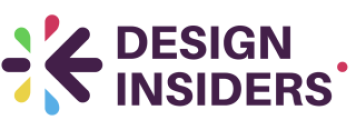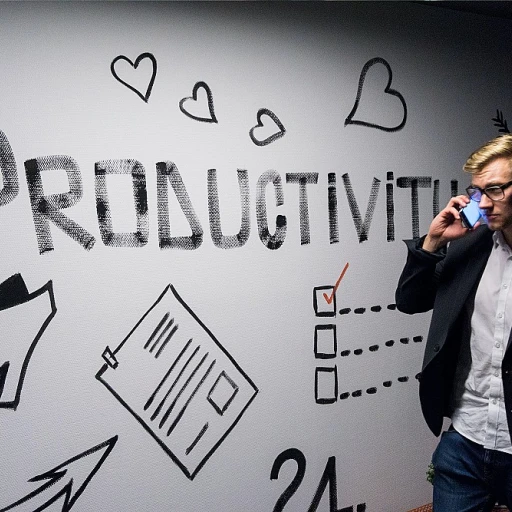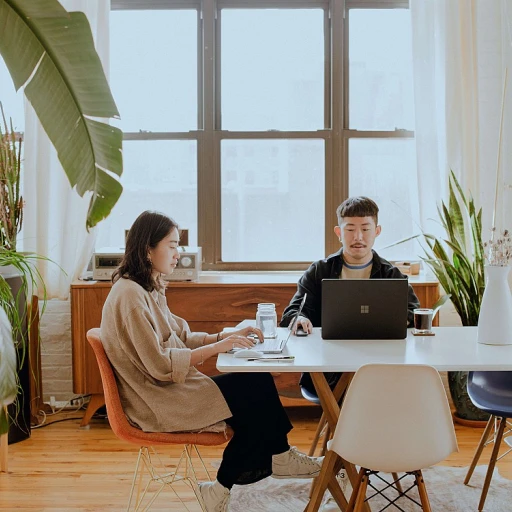
Balancing Creativity with Client Expectations
Finding Harmony Between Art and Business
In the realm of design, the role of a Director Artistique is to bridge the gap between artistic vision and business objectives. This position requires not only a deft creative touch but also the ability to interpret and deliver on client expectations. Striking this balance is one of the most significant challenges a Director Artistique faces. Meeting client expectations while maintaining creative integrity demands a keen understanding of both the client's needs and the creative process. Being attuned to client desires does not mean sacrificing artistic principles; instead, it involves communicating effectively, setting realistic expectations, and crafting solutions that are both innovative and aligned with the client's brand identity. To enhance this delicate balance, leveraging modern tools and strategies is vital. Embracing flexibility and being open to feedback can often lead to stronger design outcomes. Designers must often adjust their artistic inclinations in favor of strategic design elements that resonate more powerfully within the targeted market segment. A thorough knowledge of design files and tools is crucial, notably understanding the types of files used in the industry. Familiarizing oneself with the intricacies of non-vectorized Adobe Illustrator files can be advantageous, providing a technical foundation on which creative ideas can be built. Learning to navigate these technical details without compromising on creativity helps construct a robust dialogue between the artistic and the pragmatic aspects of the design process. In essence, achieving a careful balance between creativity and client expectations enhances the overall effectiveness of a design director's leadership role. It sets the stage for other crucial competencies, such as leading a diverse creative team, which are also pivotal in this dynamic industry.Leading a Diverse Creative Team
Fostering a Collaborative Environment
Leading a diverse creative team in the design industry is both an art and a science. It's about bringing together individuals with different backgrounds, skills, and perspectives to create something unique. This diversity is a strength, but it can also present challenges. To navigate these, it's crucial to foster a collaborative environment where every team member feels valued and heard.
Encouraging open communication is key. Regular team meetings and brainstorming sessions can help in generating des idées that are innovative and inclusive. It's important to create a space where team members feel comfortable sharing their thoughts without fear of criticism. This openness can lead to a more dynamic and creative process, ultimately benefiting the client and the project.
Embracing Different Perspectives
Each team member brings a unique perspective to the table, and as a director, it's your role to harness these differences. Encourage team members to draw from their personal experiences and cultural backgrounds. This can lead to a richer, more varied design process that resonates with a broader audience.
However, balancing these diverse viewpoints with client expectations can be challenging. It's essential to align the team's creative vision with the client's goals. This requires clear communication and a deep understanding of the client's needs, as discussed in the section on balancing creativity with client expectations.
Developing Leadership Skills
To effectively lead a diverse team, developing strong leadership skills is crucial. This includes being adaptable, empathetic, and decisive. You need to be able to make tough decisions while considering the input and feelings of your team. Building trust within your team is vital, as it encourages collaboration and innovation.
In conclusion, leading a diverse creative team requires a delicate balance of fostering collaboration, embracing different perspectives, and honing leadership skills. By doing so, you can create an environment where creativity thrives, and projects are executed successfully.
Staying Ahead of Design Trends
Embracing the Ever-Evolving Design Landscape
In the dynamic world of design, staying ahead of design trends is crucial for any Directeur Artistique. The landscape is constantly shifting, with new styles, technologies, and methodologies emerging at a rapid pace. To maintain relevance and inspire your team, it's essential to be proactive in exploring these changes.
One effective strategy is to immerse yourself in a variety of design sources. This includes subscribing to industry publications, attending design conferences, and engaging with online communities. These platforms are rich with insights and can provide a comprehensive view of current trends. Additionally, they offer a chance to network with other professionals who share your passion for design.
Another approach is to foster a culture of continuous learning within your team. Encourage your designers to experiment with new tools and techniques. This not only enhances their skill set but also keeps the creative energy flowing. For instance, exploring graphic design principles can offer fresh perspectives and inspire innovative solutions.
Furthermore, integrating feedback from clients and peers is invaluable. It provides a real-world perspective on how trends are perceived and implemented. This feedback loop is crucial for refining your approach and ensuring that your projects resonate with the target audience.
Ultimately, staying ahead of design trends is about being adaptable and open to change. It's about blending the timeless elements of art with the latest innovations to create designs that are both relevant and impactful. By doing so, you not only meet client expectations but also lead your team with confidence and vision.
Managing Time and Resources Effectively
Optimizing Time and Resource Management
In the fast-paced world of design, managing time and resources effectively is crucial for any Directeur Artistique. Balancing creativity with client expectations requires not only artistic vision but also strategic planning. It's essential to prioritize tasks and allocate resources efficiently to ensure that all projects are delivered on time and within budget.
One approach is to establish a clear timeline for each projet. This involves breaking down the project into smaller tasks and setting deadlines for each phase. By doing so, you can monitor progress and make adjustments as needed. This method also helps in identifying potential bottlenecks early on, allowing for proactive solutions.
Another key aspect is resource allocation. Understanding the strengths and weaknesses of your creative team is vital. Assign tasks based on individual expertise to maximize productivity and quality. This not only enhances the output but also boosts team morale, as individuals are more likely to excel in areas they are passionate about.
Utilizing project management tools can also be beneficial. These tools offer a centralized platform for tracking progress, managing resources, and facilitating communication among team members. They can help streamline processes and ensure that everyone is on the same page.
Moreover, it's important to maintain flexibility. Design trends are constantly evolving, and being adaptable allows you to incorporate new ideas and technologies into your projects. This adaptability is not only crucial for staying ahead of the curve but also for meeting the diverse needs of your clients.
In conclusion, effective time and resource management is a balancing act that requires careful planning and execution. By leveraging the strengths of your team and utilizing the right tools, you can overcome the challenges of managing multiple projects and deliver exceptional results.
Navigating Feedback and Criticism
Turning Critiques Into Creative Opportunities
Navigating feedback and criticism can be one of the most challenging aspects of being a creative director in the design industry. It's crucial to view feedback as a constructive tool that can elevate your work rather than as a personal attack. Here’s how to effectively handle criticism:- Embrace Open Dialogue: Encourage open communication within your team and with clients. Understanding varied perspectives can lead to more robust design outcomes that meet client expectations while nurturing your creative vision.
- Filter Constructive Feedback: Not all feedback will align with your design approach. Skillfully discern which suggestions will enhance the project without compromising the creative integrity of your vision.
- Foster a Culture of Continuous Learning: View each piece of criticism as a learning opportunity. This mindset reinforces your commitment to staying ahead of design trends and pushes you to explore innovative solutions.
- Maintain Professionalism: Handling criticism with professionalism can strengthen your leadership presence, proving your ability to manage various perspectives within your team and external stakeholders.
- Transform Criticism into Solutions: Approach each feedback session as a platform to brainstorm improvements. This not only benefits your current project but also enhances your skills for future endeavors.
Building a Strong Personal Brand
Crafting a Distinctive Personal Brand in Design
In the competitive world of design, establishing a strong personal brand is crucial for any Directeur Artistique. This involves more than just showcasing your portfolio; it's about creating a unique identity that resonates with clients and sets you apart in the industry.
To build a compelling personal brand, consider the following strategies:
- Define Your Unique Style: Your design style should be a reflection of your artistic vision. Whether it's through the use of color, typography, or innovative layouts, your work should communicate who you are as a designer.
- Showcase Your Expertise: Highlight your experience and the successful projects you have led. This not only demonstrates your capability but also builds trust with potential clients.
- Engage with the Design Community: Participate in design forums, attend industry events, and collaborate with other creatives. This helps you stay informed about design trends and expands your network.
- Utilize Social Media: Platforms like Instagram and LinkedIn are excellent for sharing your work and connecting with other professionals. Regularly posting content that reflects your design philosophy can attract the right audience.
- Seek Feedback: Constructive criticism is invaluable for growth. Engaging with feedback, as discussed earlier, can refine your skills and enhance your brand.
Remember, a strong personal brand is not static; it evolves with your career. As you balance creativity with client expectations and lead diverse teams, your brand should reflect these experiences and growth. By focusing on these aspects, you can create a personal brand that not only stands out but also aligns with your professional goals.





